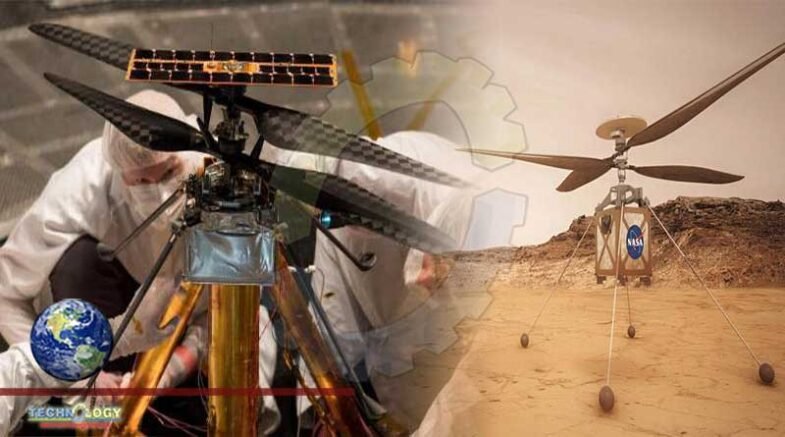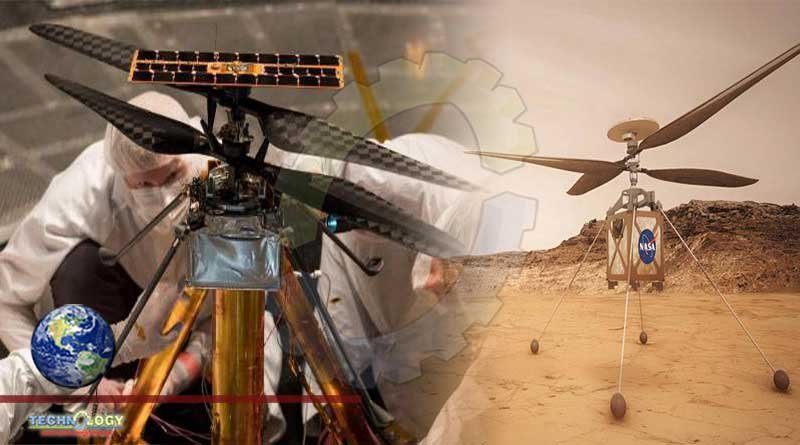Not only will NASA’s Mars 2020 Perseverance rover be touching down on the red plant this Thursday, he first ever helicopter to visit Mars.

Not only will NASA’s Mars 2020 Perseverance rover be touching down on the red plant this Thursday, but it also brought along a little friend, stored under its belly: the first ever helicopter to visit Mars.
Nicknamed Ingenuity, the 4-pound tiny chopper is actually a test mission for NASA. It will provide an important technology demonstration proving if a future, more expansive mission using similar hardware would work.
Following the 300-million-mile journey and frightful landing on Mars, Ingenuity will be released from the rover’s under carriage for a short term-mission unrelated to its ride Perseverance.
The tiny helicopter has four carbon-fiber blades that spin around 2,400 rpm, way faster than choppers here in Earth, which spin between 225 and 500 depending on the size of the flight vehicle. The tiny chopper also has solar cells, lithium-ion batteries, and other components, according to NASA.
If it goes well, Ingenuity will complete the first powered flight on another planet sometime this spring and hopefully repeat it four more times within 30 Martian days, the equivalent of 31 days on Earth.
As a technology demonstration mission, each milestone for the helicopter will mark a win for the team behind Ingenuity.
“The Ingenuity team has done everything to test the helicopter on Earth, and we are looking forward to flying our experiment in the real environment at Mars,” NASA JPL Ingenuity manager MiMi Aung said in August. “We’ll be learning all along the way, and it will be the ultimate reward for our team to be able to add another dimension to the way we explore other worlds in the future.”
The first accomplishment was surviving being rocketed into space. Teams already know Ingenuity survived the July 2020 launch from Cape Canaveral because they were able to perform a power recharge of the chopper post-liftoff.
As long as Perseverance survives the landing, the next milestone for Ingenuity will be deploying onto the surface of Mars from the rover’s belly. Next, it must survive the cold overnight temperatures and keep itself charged using solar panels powered by the sun.
Flying on Mars offers its own challenges as the red planet has gravity about 1/3 that of Earth but an atmosphere only 1% that of Earth, which makes it harder to fly.
When it does fly, Ingenuity will get up to 15 feet and cover about 160 feet each time. From take off and landing, engineers will try to make each trip no longer than 90 seconds.
Even though it’s an independent mission from the rover, it will never fly farther than .6 miles from the NASA robot because it needs Perseverance to communicate back to Earth.
NASA said if Ingenuity’s test mission goes well similar helicopters could be used to scout locations on Mars too dangerous for a rover and help future astronauts when they first arrive on the red planet.
Originally published at Click Orlando
